A Valley of Stone in Ticino, Switzerland
The alpine paradise of Switzerland is distinguished by a picturesque landscape of glacial lakes and snowcapped mountains dotted with villages of charming red geranium-laden wooden chalets.
The 12 villages of the remote Bavona Valley in the Italian-speaking canton of Ticino share similar characteristics, but their stone architecture is less representative of that archetypal Swiss style. That’s not the only thing marking them as outliers—this valley of stone exists completely off the grid.
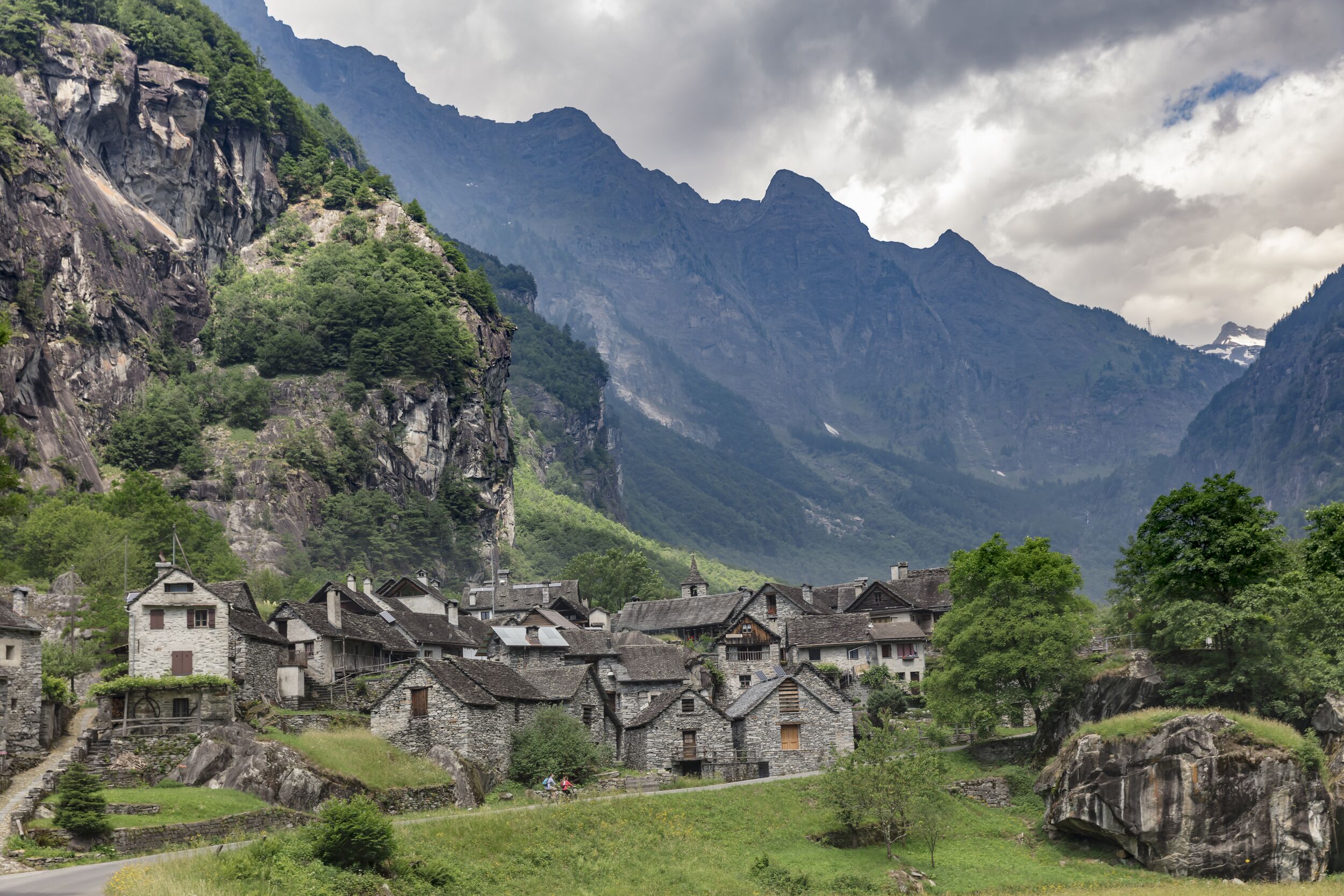
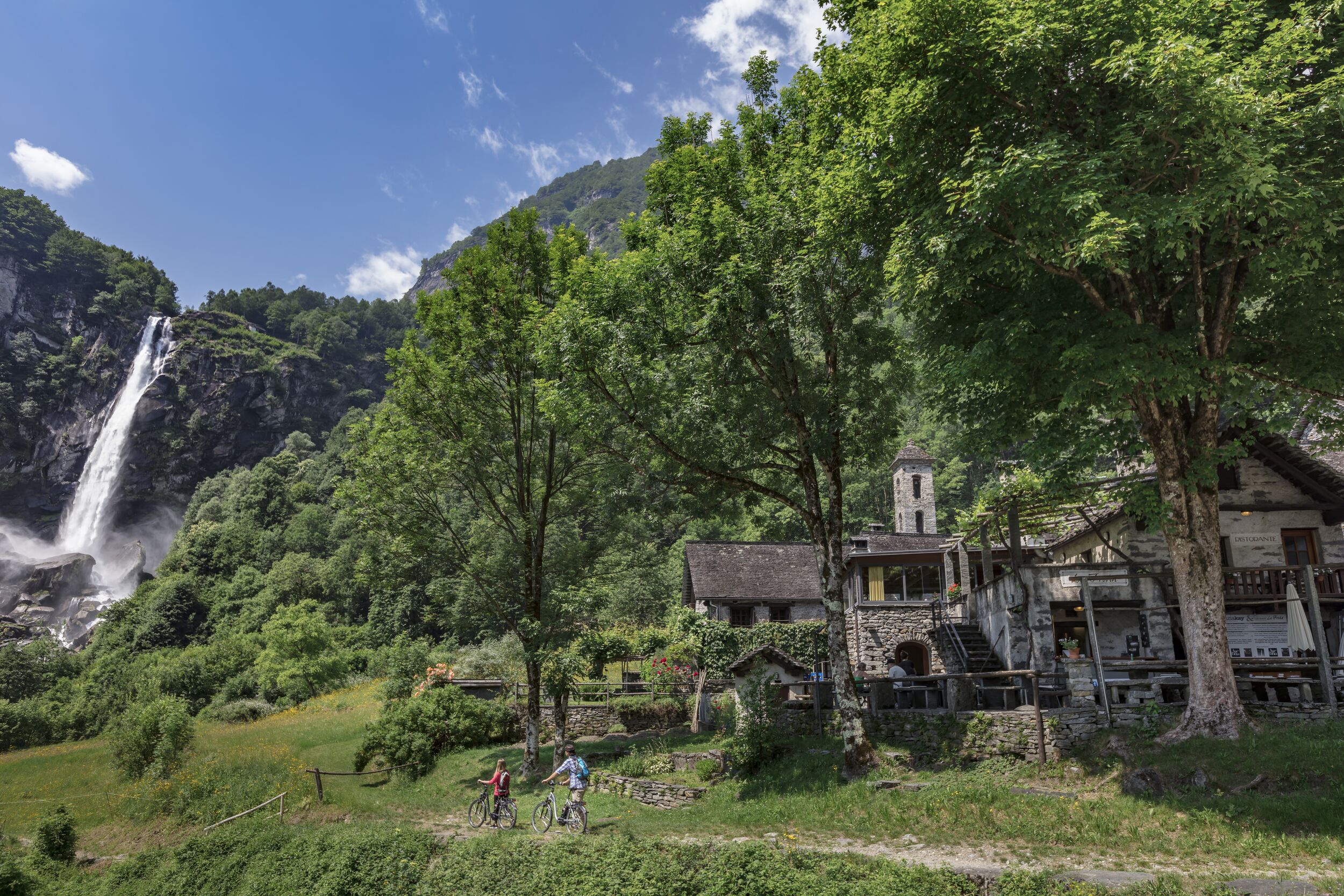
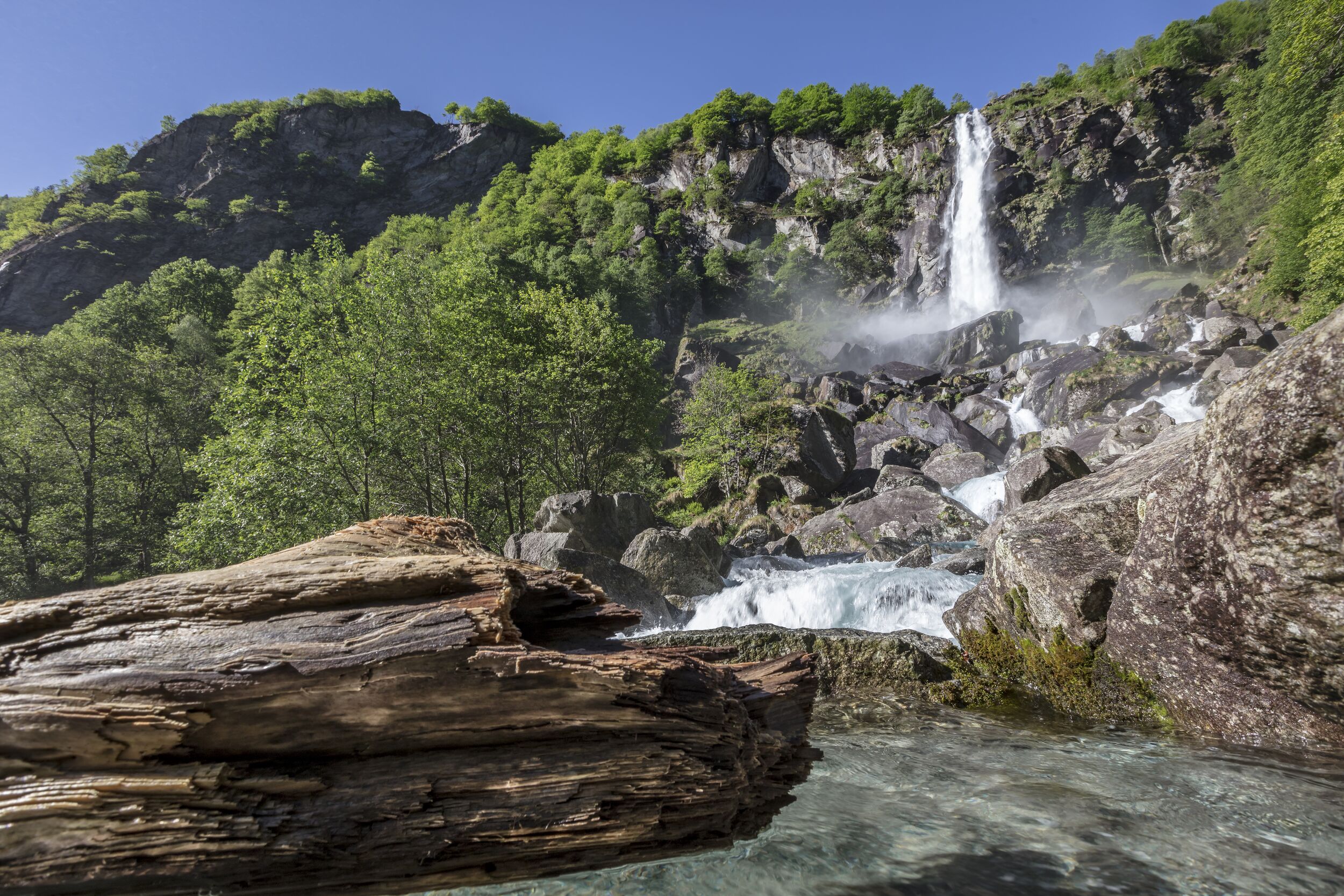
The villages, or terre, of Bavona are situated within one of the steepest and wildest valleys in the Swiss Alps, where towering rock walls rise vertically hundreds of metres, overlooking a narrow valley marked by landslides, erratic boulders, and pockets of human activity.
Back in the day, the Bavonesi used the abundant stone materials at hand to create cottages, called rustici, that weathered the region’s severe winter climate and sheltered residents and animals in the summer. Today, the villages welcome residents and guests back during warmer months to experience the valley’s spectacular beauty. Without the hum of electricity.
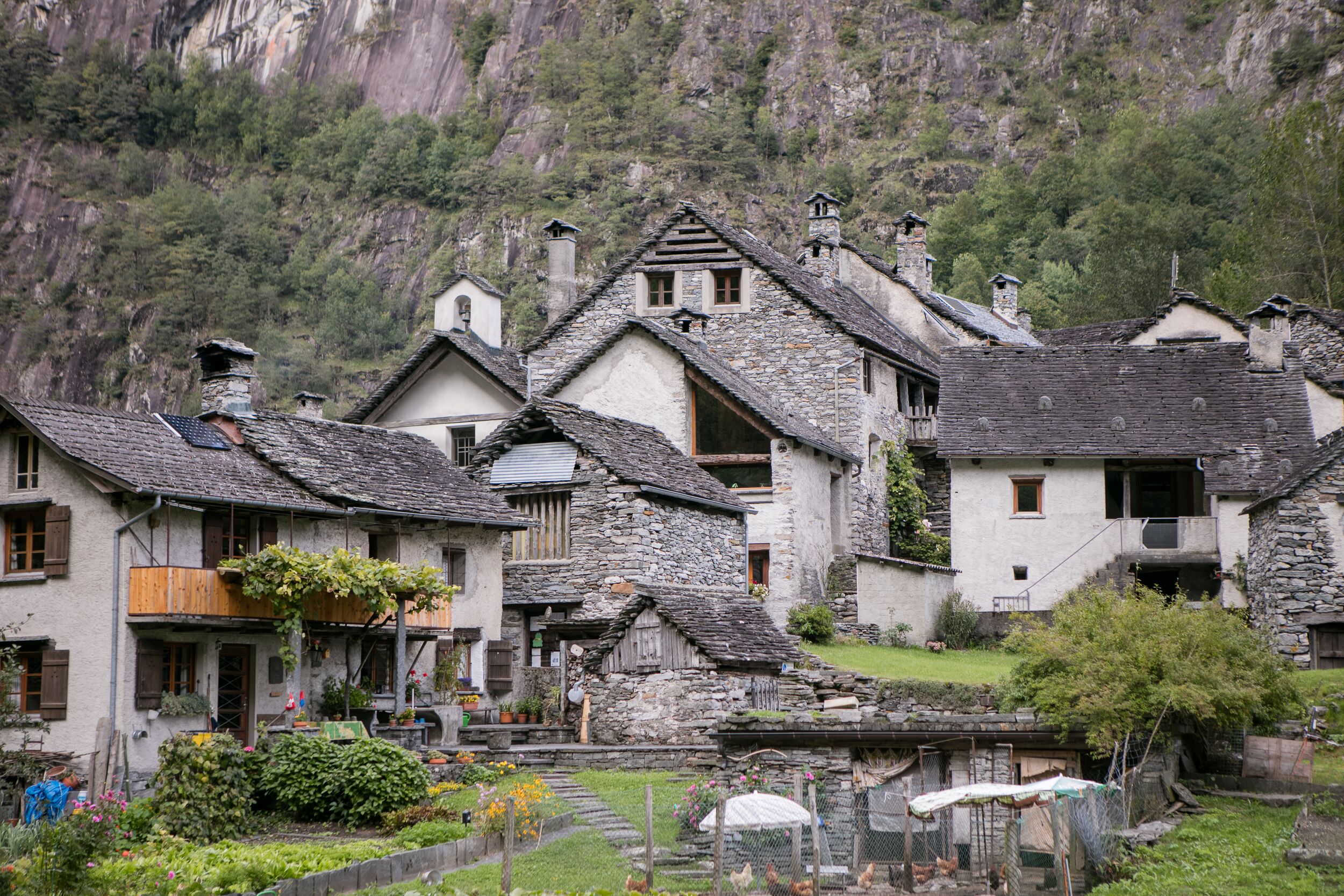
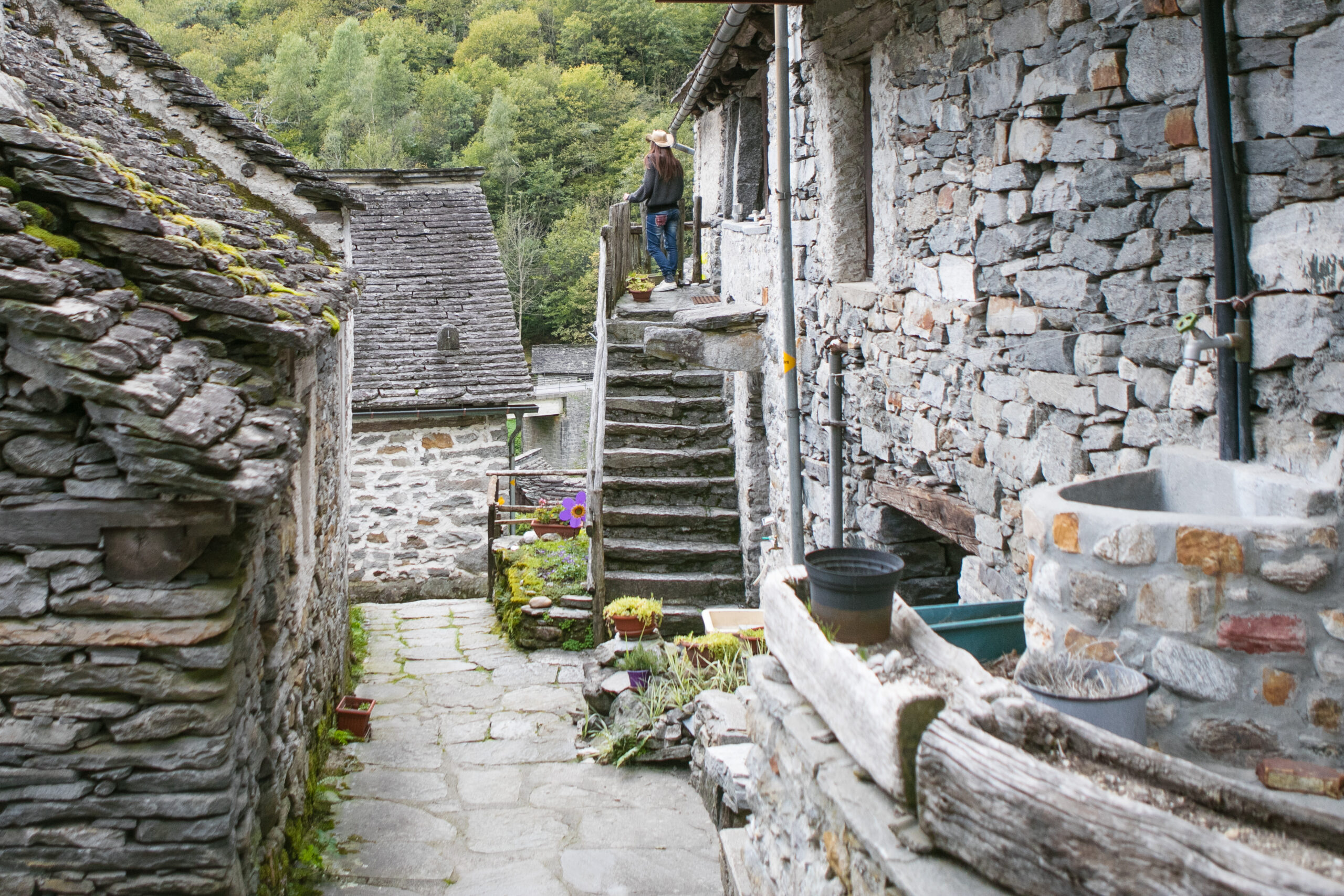
The villages of the Bavona Valley are off the grid by design. This decision was made in the 1950s when residents declined the opportunity to pay for electrical power produced by alpine dams and hydro stations, preferring instead to live as their ancestors had: by woodfire, candlelight and, later, solar panels and communal natural gas supplies.
The Bavona Valley is a place marked by transumanza (migration), a tradition that takes place in many Swiss alpine regions. Farmers return to the valley in summer, leading their livestock up into the cooler alpine grazing areas. Several of these trails take wanderers past towering waterfalls like Foroglio (at over 100 metres) and up to alpine lakes formed by the meltwater of the Basòdino glacier.

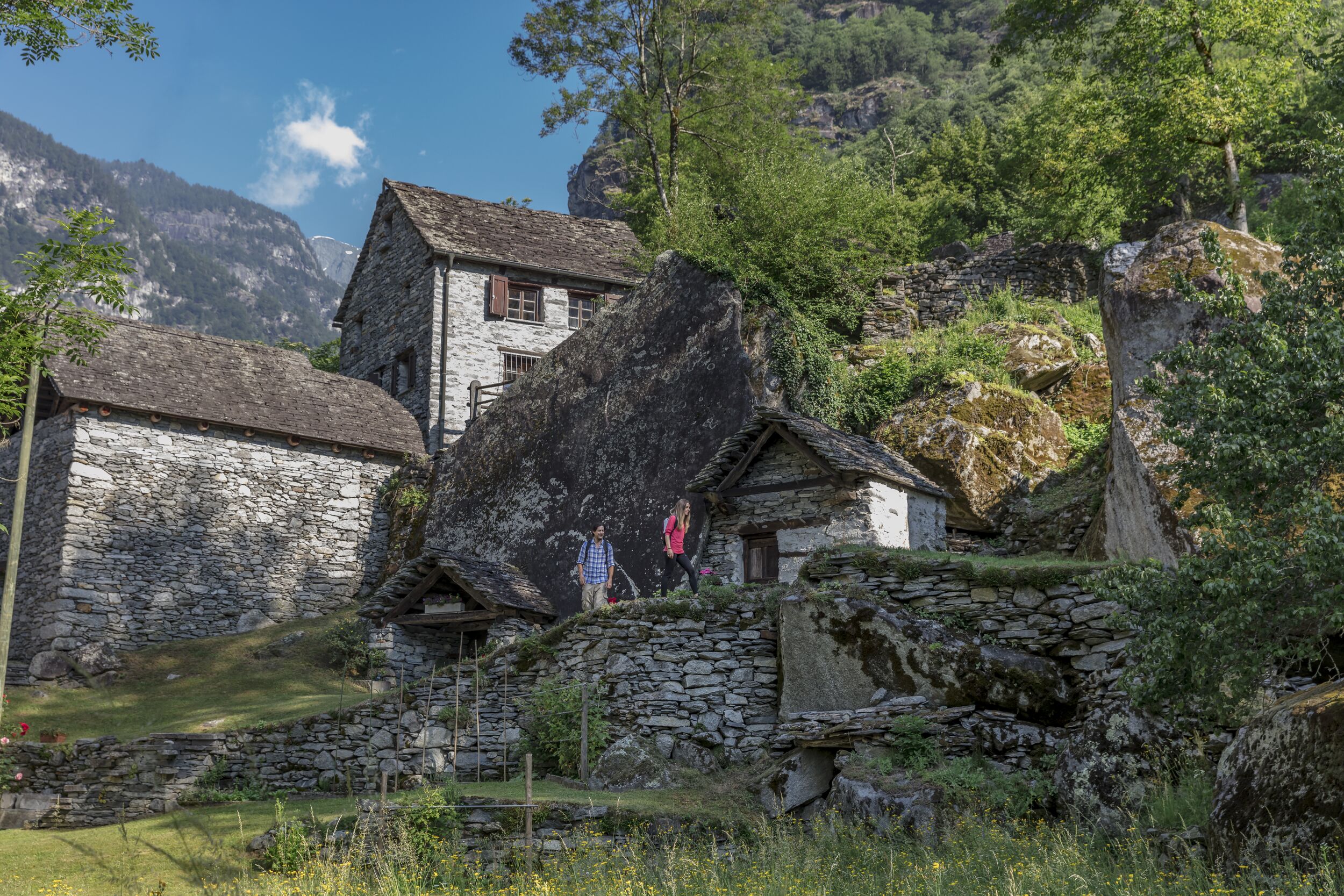
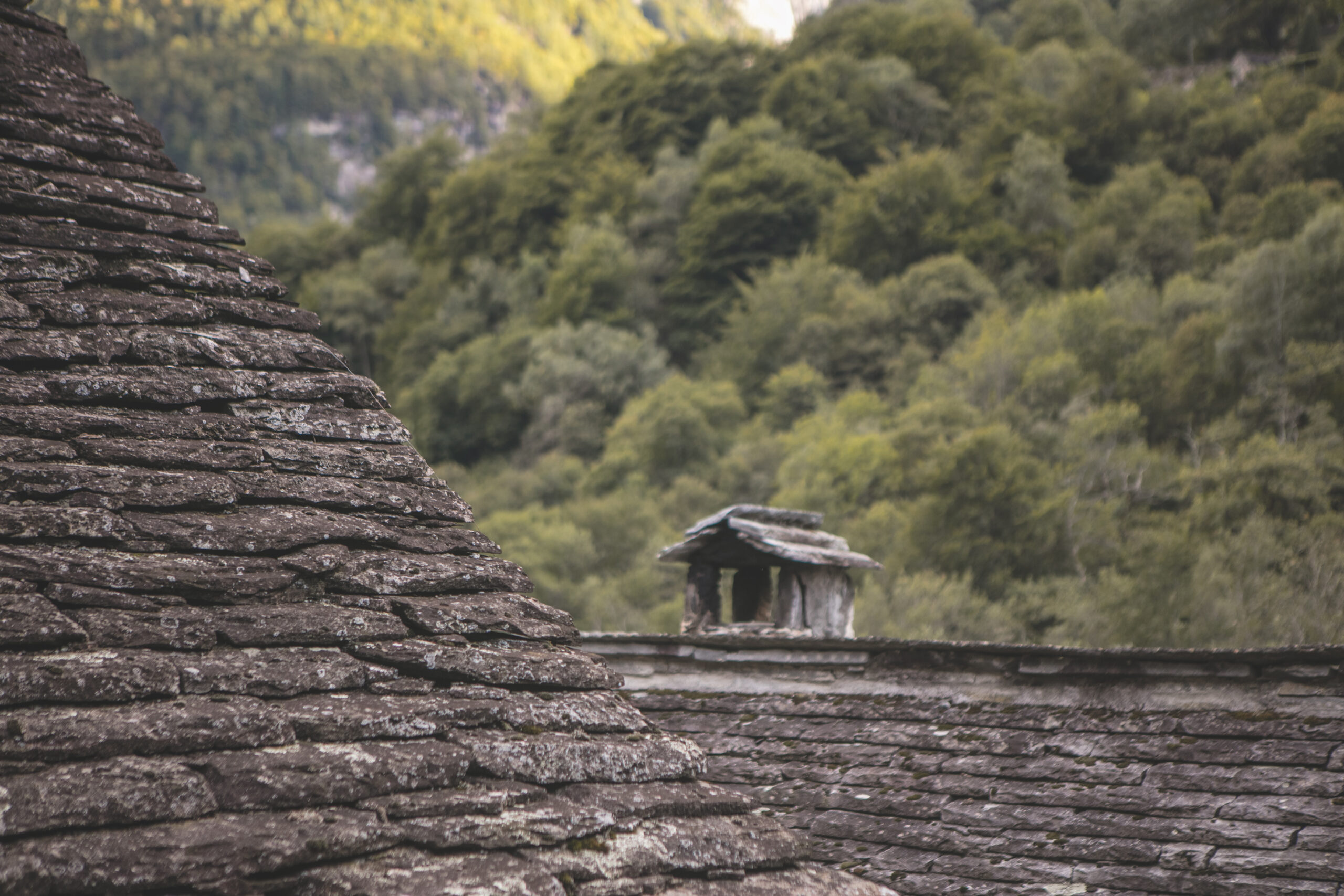
Visitors can best experience the valley on a roughly 10-kilometre walk through all 12 of the region’s villages, passing grassy pastures and wildflower meadows of grazing cows, rustic gray stone houses, and churches dating back to the 16th century. At the head of the valley, the village of San Carlo is a sole subscriber of electricity, using power to operate the cable car linking Bavona to the lakeside town of Robiei.
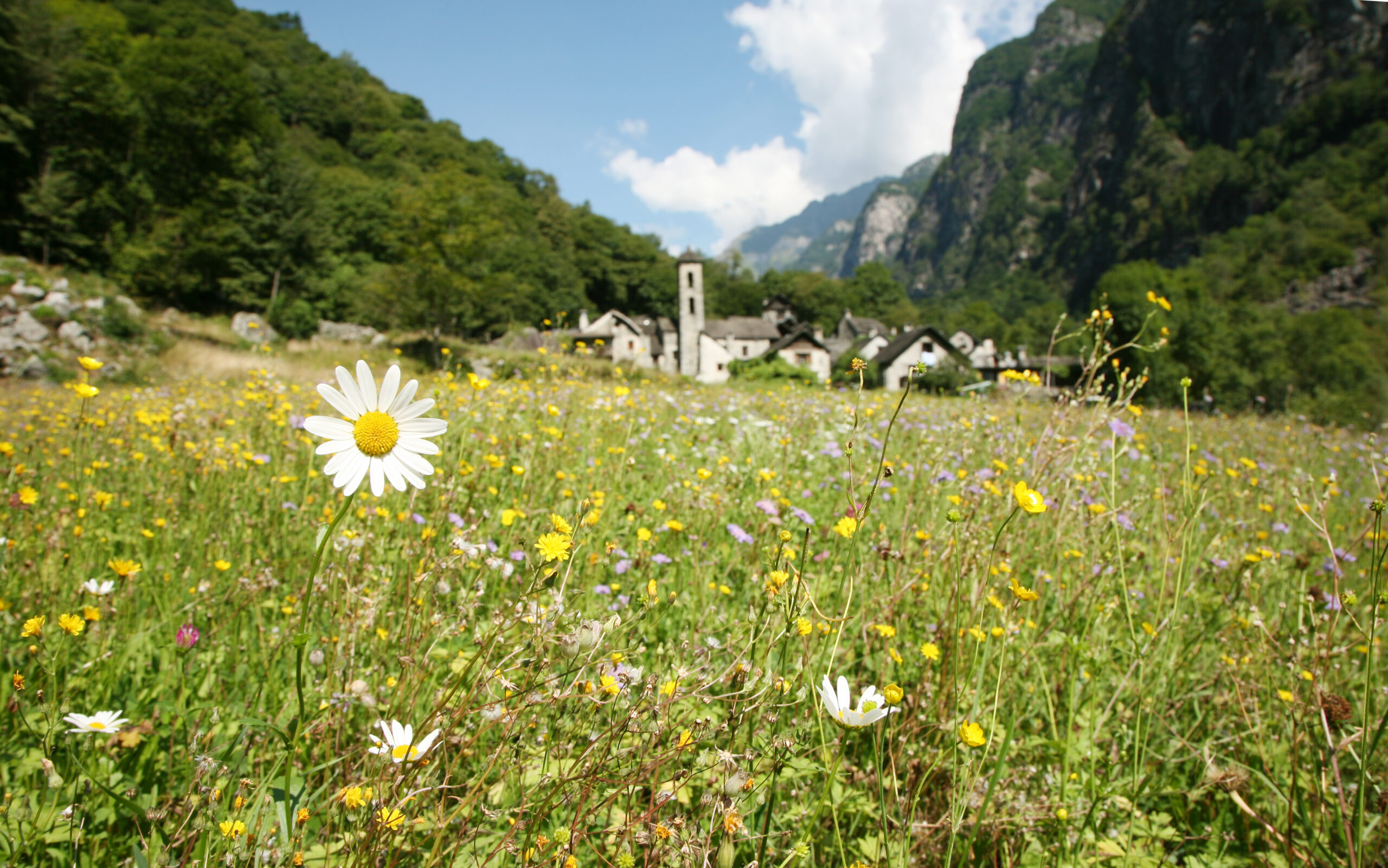
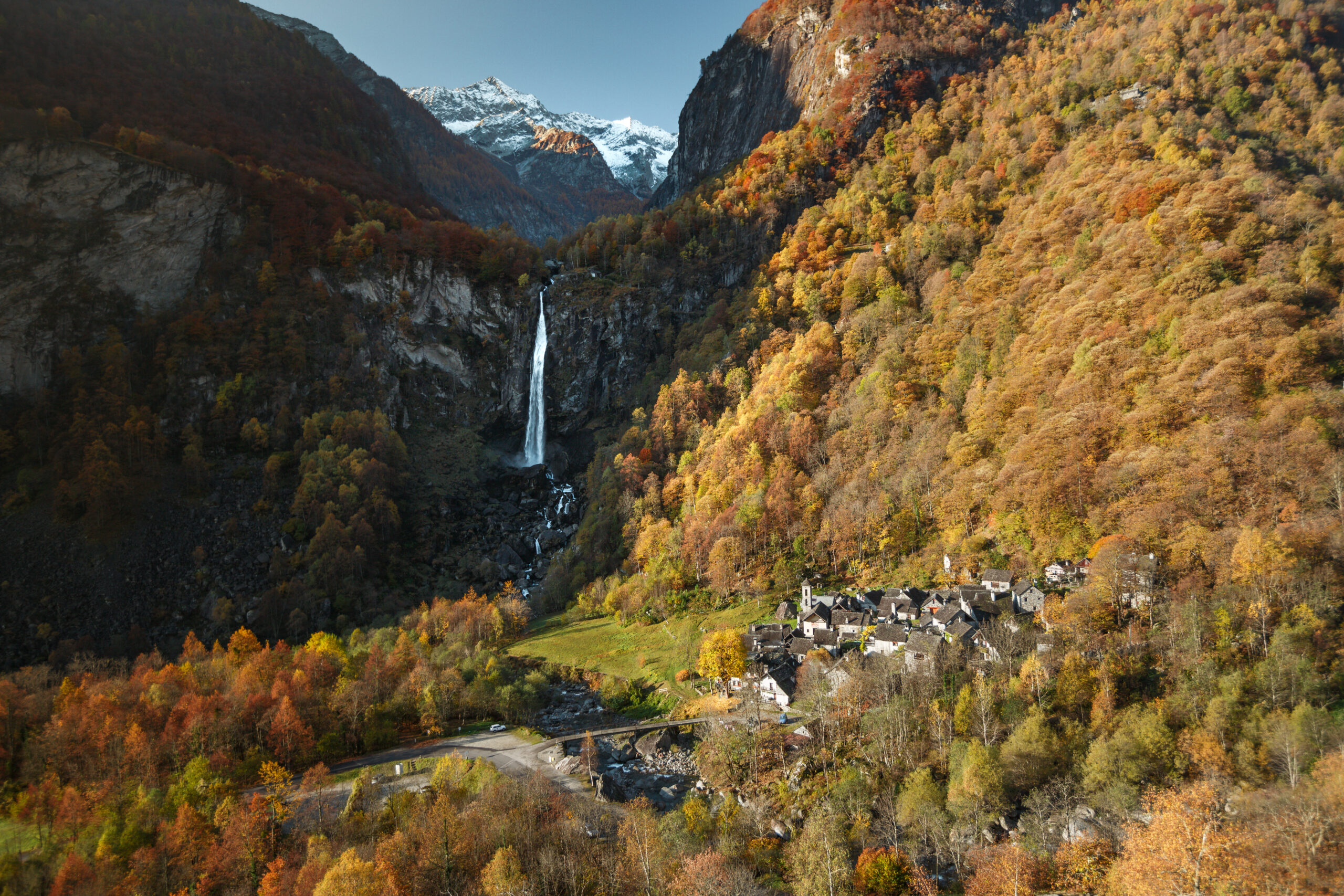
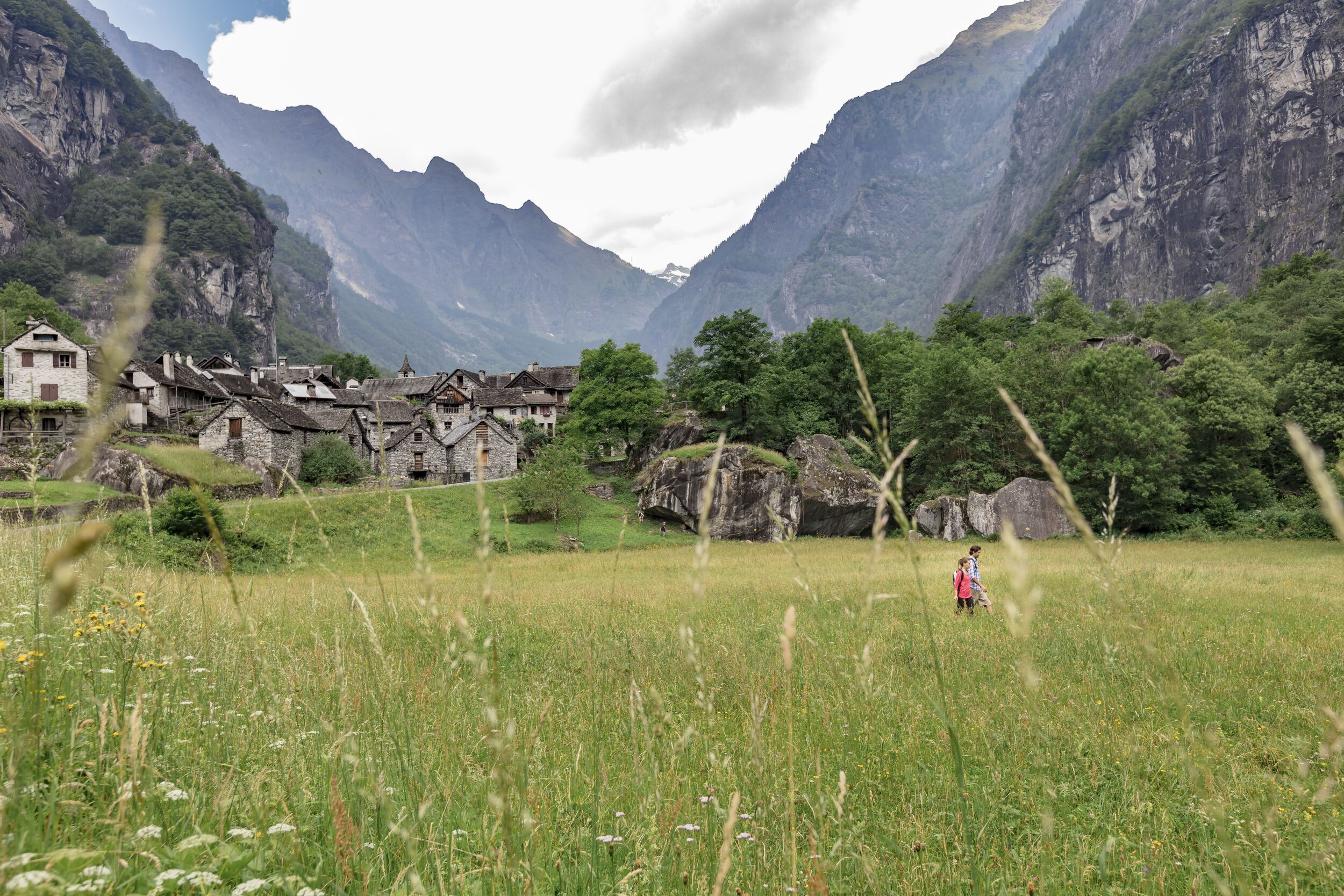
The valley’s cultural heritage is celebrated seasonally during the annual Procession of Gannariente. The historic event takes place on the first Sunday in May and is rooted in the rural life of the valley’s past, when the quality of the summer harvest could determine the future of a family and the economy of the region.
Bavona’s iconic rustici are protected and a few are available for travellers to rent to enjoy the quiet of the spectacular valley. Days spent exploring Bavona and discovering the pleasures of Ticino’s delicious white merlot vintages are a wonderful way to delight in la bella vita, Swiss-style.
The Bavona Valley is accessible via a 90-minute Swiss Post bus ride from the Locarno train station.




